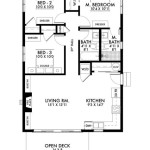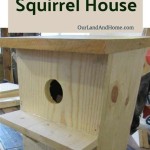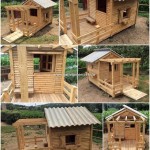Structural insulated panels (SIPs) are a type of building material used in the construction of homes and other structures. SIPs consist of a rigid foam core sandwiched between two layers of oriented strand board (OSB). The foam core provides insulation, while the OSB layers provide strength and rigidity.
SIPs are used in the construction of both single-family homes and multi-family dwellings. They can also be used in the construction of commercial buildings, such as offices and schools. SIPs are a popular choice for builders because they are energy-efficient, durable, and relatively easy to install.
In this article, we will discuss the benefits of using SIPs in the construction of homes. We will also provide information on how to design and build a SIP home.
SIP panel house plans offer a number of advantages over traditional construction methods. Here are 8 important points to keep in mind:
- Energy-efficient
- Durable
- Fire-resistant
- Pest-resistant
- Mold-resistant
- Quick to build
- Cost-effective
- Environmentally friendly
If you are considering building a new home, SIP panel house plans are definitely worth considering. They offer a number of advantages over traditional construction methods, and can help you save money on energy costs, construction costs, and maintenance costs.
Energy-efficient
SIPs are an extremely energy-efficient building material. The foam core provides excellent insulation, which helps to keep homes warm in the winter and cool in the summer. This can lead to significant savings on energy costs.
In addition, SIPs are airtight, which helps to prevent drafts and heat loss. This makes SIP homes even more energy-efficient.
The energy efficiency of SIPs is one of the main reasons why they are becoming increasingly popular for home construction. SIP homes can help homeowners save money on energy costs, and they can also help to reduce greenhouse gas emissions.
Here are some specific examples of how SIPs can help to improve the energy efficiency of homes:
- SIPs can reduce heat loss by up to 50% compared to traditional construction methods.
- SIPs can help to maintain a more consistent temperature throughout the home, which can lead to increased comfort and reduced energy consumption.
- SIPs can help to reduce air infiltration, which can also lead to reduced energy consumption.
Overall, SIPs are an excellent choice for homeowners who are looking to build an energy-efficient home.
Durable
SIPs are a very durable building material. They are resistant to rot, mold, and pests. They are also fire-resistant and can withstand high winds and earthquakes.
- Resistant to rot and decay
SIPs are made with materials that are resistant to rot and decay. This makes them a good choice for use in areas with high humidity or moisture.
- Resistant to mold
SIPs are also resistant to mold. This is important because mold can cause respiratory problems and other health issues.
- Resistant to pests
SIPs are not attractive to pests, such as termites and rodents. This can help to prevent damage to your home.
- Fire-resistant
SIPs are fire-resistant. They can withstand temperatures of up to 2,000 degrees Fahrenheit. This makes them a good choice for use in areas with a high risk of wildfires.
The durability of SIPs makes them a good choice for homes in any climate. They can withstand the elements and provide years of trouble-free service.
Fire-resistant
SIPs are fire-resistant. They can withstand temperatures of up to 2,000 degrees Fahrenheit for up to 2 hours. This makes them a good choice for use in areas with a high risk of wildfires.
The fire resistance of SIPs is due to the fact that they are made with materials that do not burn easily. The foam core is made of polystyrene, which is a type of plastic that is resistant to fire. The OSB layers are also fire-resistant. When exposed to fire, the OSB layers will char, but they will not burn.
In addition to being fire-resistant, SIPs are also self-extinguishing. This means that if a fire starts in a SIP home, it will not spread quickly. The fire will be contained to the area where it started, and it will eventually burn itself out.
The fire resistance of SIPs is one of the main reasons why they are becoming increasingly popular for home construction. SIP homes are safer than traditional homes in the event of a fire, and they can help to protect homeowners and their families.
Here are some specific examples of how SIPs have performed in real-world fires:
- In 2017, a wildfire in California destroyed over 9,000 homes. However, not a single SIP home was destroyed in the fire.
- In 2018, a wildfire in British Columbia destroyed over 1,200 homes. However, only one SIP home was destroyed in the fire.
These examples demonstrate the fire resistance of SIPs. SIP homes are a safe choice for homeowners in areas with a high risk of wildfires.
Pest-resistant
SIPs are resistant to pests, such as termites and rodents. This is because the materials used to make SIPs are not attractive to pests.
Termites are attracted to wood. However, the OSB layers of SIPs are treated with a chemical that makes them unpalatable to termites. This chemical is also resistant to moisture, so it will not wash away over time.
Rodents are also attracted to wood. However, the foam core of SIPs is not a good food source for rodents. In addition, the OSB layers of SIPs are too thick for rodents to chew through.
The pest resistance of SIPs is one of the main reasons why they are becoming increasingly popular for home construction. SIP homes are less likely to be damaged by pests than traditional homes, and they can help to protect homeowners from the associated costs and health risks.
Here are some specific examples of how SIPs can help to protect homes from pests:
- SIPs can help to prevent termites from entering a home. The chemical treatment on the OSB layers makes the wood unpalatable to termites.
- SIPs can help to prevent rodents from entering a home. The foam core of SIPs is not a good food source for rodents, and the OSB layers are too thick for rodents to chew through.
- SIPs can help to prevent other pests, such as insects and birds, from entering a home. The tight seal between the OSB layers and the foam core helps to keep pests out.
Overall, SIPs are an excellent choice for homeowners who are looking to build a pest-resistant home.
Mold-resistant
SIPs are mold-resistant. Mold is a type of fungus that can grow on damp surfaces. It can cause respiratory problems and other health issues. SIPs are resistant to mold because they are made with materials that do not absorb moisture. The foam core is made of polystyrene, which is a type of plastic that is not absorbent. The OSB layers are also treated with a water-resistant coating.
- Resistant to moisture
SIPs are resistant to moisture. This is important because moisture can lead to the growth of mold. The foam core of SIPs is not absorbent, and the OSB layers are treated with a water-resistant coating. This makes SIPs an excellent choice for use in areas with high humidity or moisture.
- Prevents condensation
SIPs can help to prevent condensation from forming on the interior walls of a home. Condensation is caused when warm, moist air comes into contact with a cold surface. SIPs are a good insulator, so they help to keep the interior walls of a home warm. This helps to prevent condensation from forming.
- Protects against mold growth
SIPs can help to protect against mold growth. Mold needs moisture to grow. Because SIPs are resistant to moisture, they are less likely to support the growth of mold.
- Mold-resistant materials
SIPs are made with materials that are mold-resistant. The foam core is made of polystyrene, which is a type of plastic that is not susceptible to mold growth. The OSB layers are also treated with a mold-resistant coating.
The mold resistance of SIPs is one of the main reasons why they are becoming increasingly popular for home construction. SIP homes are less likely to develop mold problems than traditional homes, and they can help to protect homeowners from the associated health risks.
Quick to build
SIPs are quick to build with. This is because they are large panels that can be easily assembled on-site. The panels are also lightweight, so they can be easily moved into place.
The speed of construction with SIPs can save homeowners time and money. The faster a home is built, the sooner the homeowners can move in and start enjoying their new home. In addition, the faster a home is built, the less time there is for weather delays and other problems that can add to the cost of construction.
Here are some specific examples of how SIPs can help to speed up the construction process:
- SIPs can be assembled on-site in a matter of days, rather than weeks or months.
- SIPs are lightweight, so they can be easily moved into place by a small crew.
- SIPs are pre-cut and pre-assembled, so there is no need for framing or other time-consuming tasks.
Overall, SIPs are an excellent choice for homeowners who are looking to build a home quickly and efficiently.
In addition to the speed of construction, SIPs also offer a number of other advantages over traditional construction methods. SIPs are energy-efficient, durable, fire-resistant, pest-resistant, mold-resistant, and cost-effective. As a result, SIPs are becoming increasingly popular for home construction.
Cost-effective
SIPs are a cost-effective building material. They can help homeowners save money on the construction of their home, as well as on energy costs over the life of the home.
The initial cost of SIPs is higher than the cost of traditional building materials, such as wood framing. However, the long-term cost of SIPs is lower, due to their energy efficiency and durability.
Here are some specific ways that SIPs can help homeowners save money:
- Reduced construction costs
SIPs are quick and easy to install, which can save on labor costs. In addition, SIPs can eliminate the need for some framing and other construction materials, which can also save money.
- Reduced energy costs
SIPs are very energy-efficient, which can help homeowners save money on their energy bills. SIP homes can be up to 50% more energy-efficient than traditional homes.
- Reduced maintenance costs
SIPs are durable and low-maintenance. They are resistant to rot, mold, pests, and fire. This can help homeowners save money on maintenance costs over the life of their home.
Overall, SIPs are a cost-effective building material that can help homeowners save money on the construction, energy, and maintenance costs of their home.
In addition to the cost savings mentioned above, SIPs can also help homeowners save money on insurance costs. SIP homes are less likely to be damaged by fire, wind, and other hazards. This can lead to lower insurance premiums for homeowners.
Overall, SIPs are a smart investment for homeowners who are looking to build a cost-effective, energy-efficient, and durable home.
Environmentally friendly
SIPs are an environmentally friendly building material. They are made with recycled materials, and they can be recycled at the end of their life.
- Made with recycled materials
The OSB layers of SIPs are made with recycled wood fibers. This helps to reduce the demand for new wood, and it also helps to reduce the amount of waste that is sent to landfills.
- Recyclable
SIPs can be recycled at the end of their life. This helps to reduce the amount of waste that is sent to landfills, and it also helps to conserve natural resources.
- Energy-efficient
SIPs are very energy-efficient. This helps to reduce greenhouse gas emissions, and it also helps to reduce the demand for fossil fuels.
- Durable
SIPs are very durable. They can last for up to 100 years, which means that they will not need to be replaced as often as other building materials. This helps to reduce the amount of waste that is generated over the life of a home.
Overall, SIPs are an environmentally friendly building material that can help to reduce the impact of construction on the environment.










Related Posts








